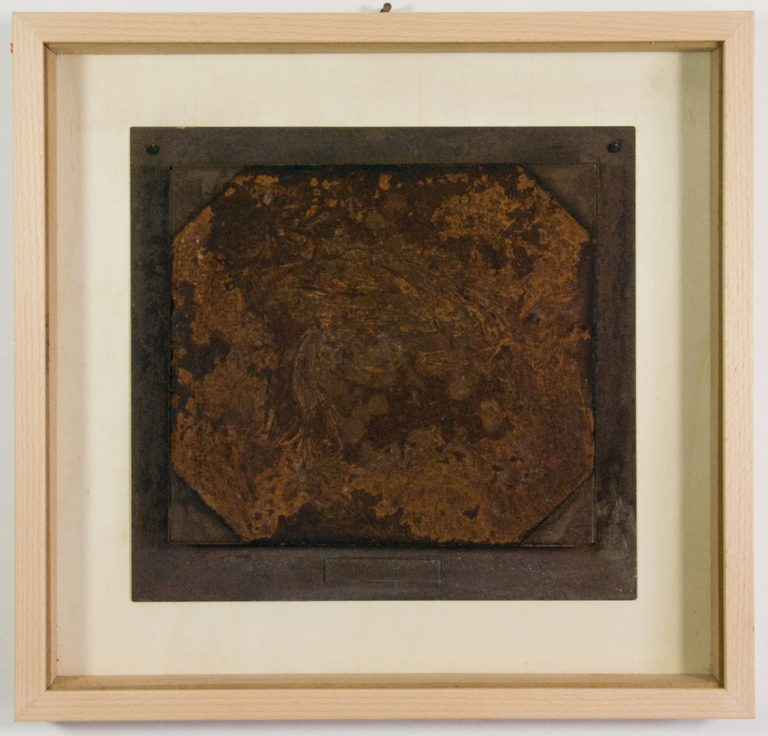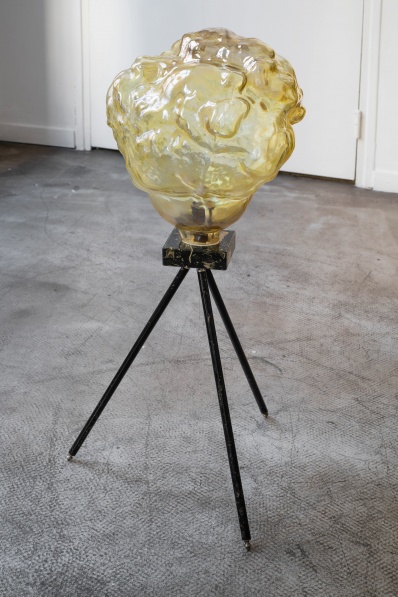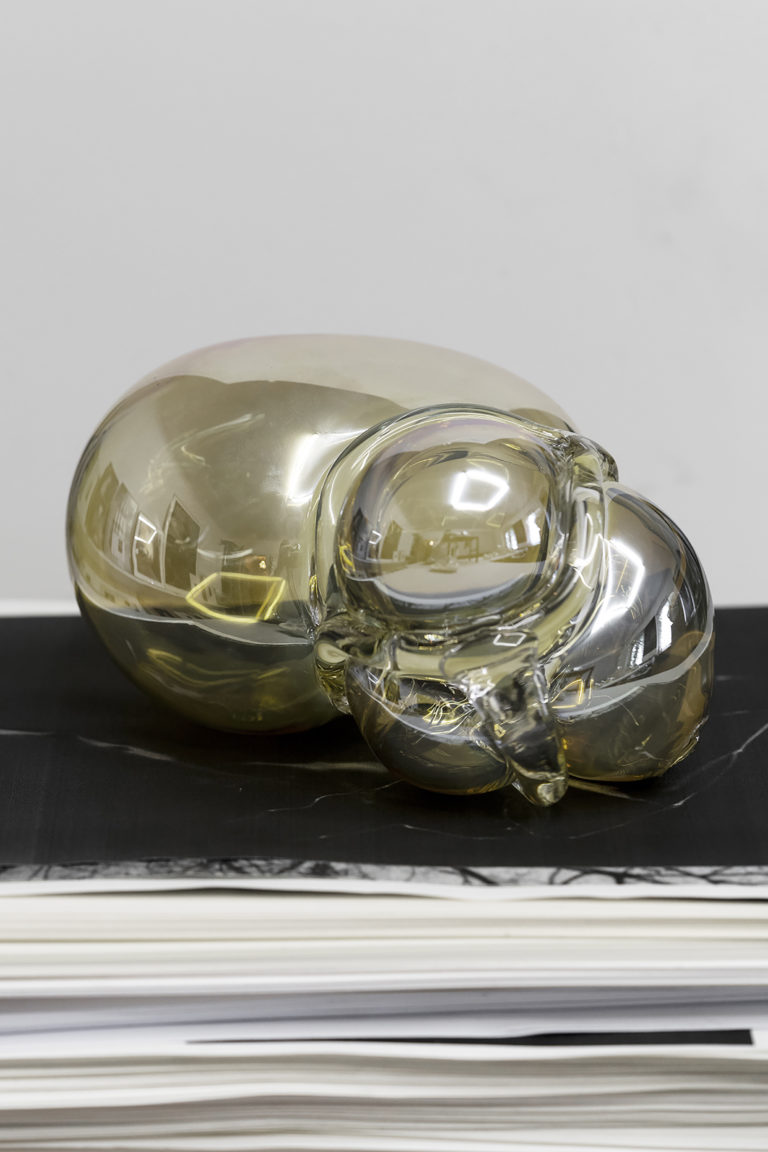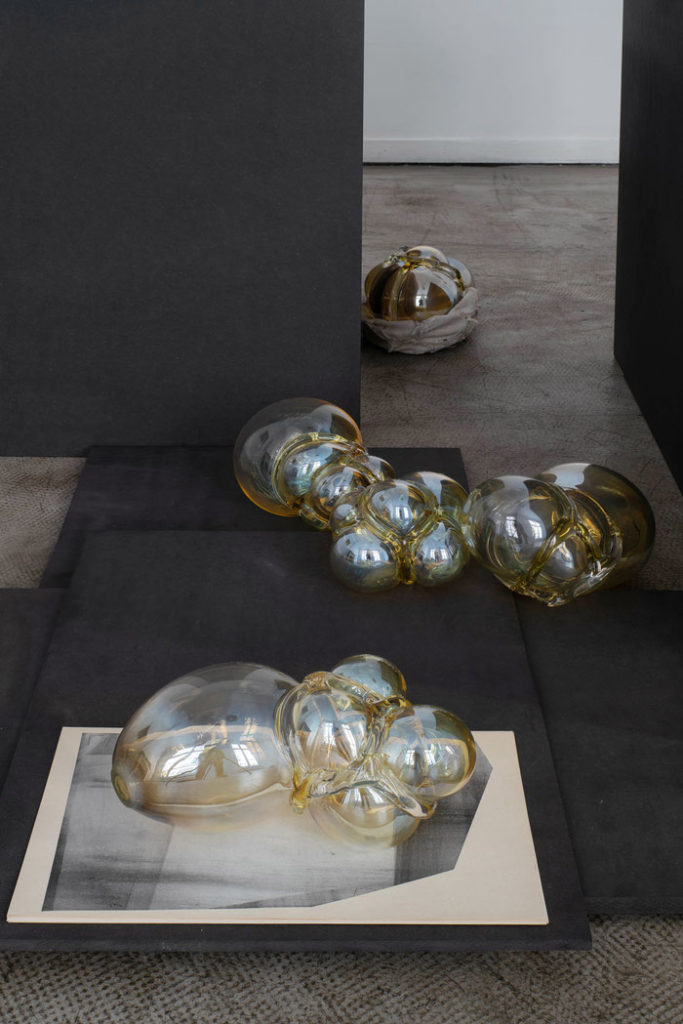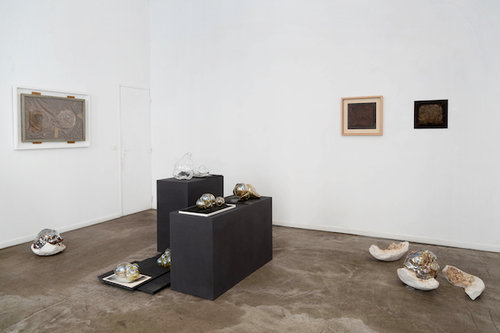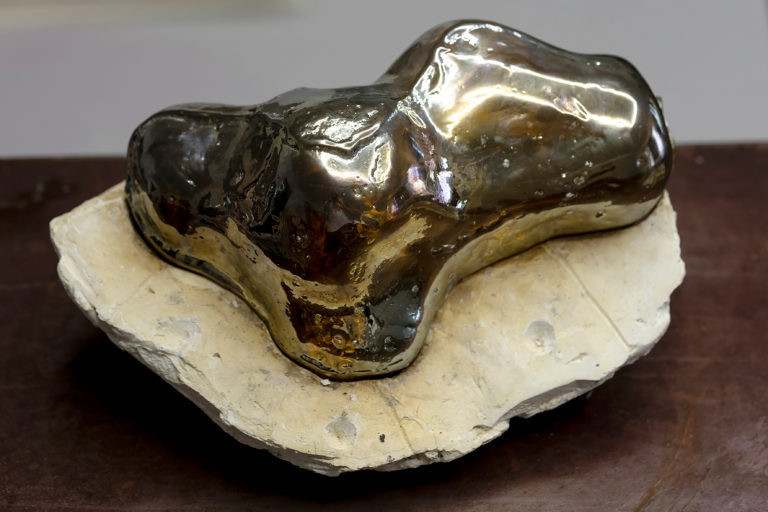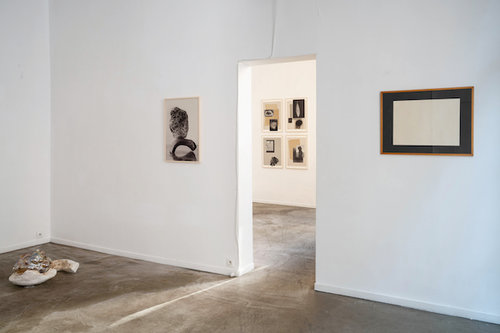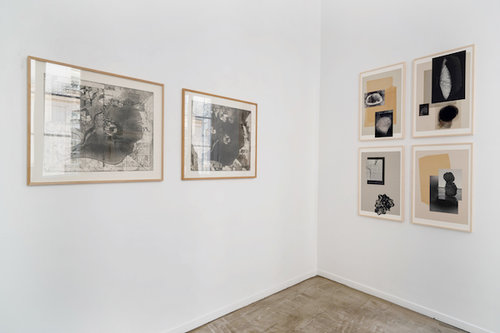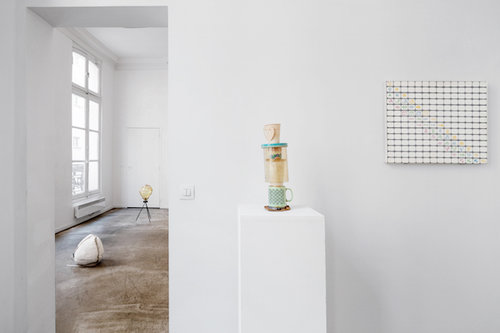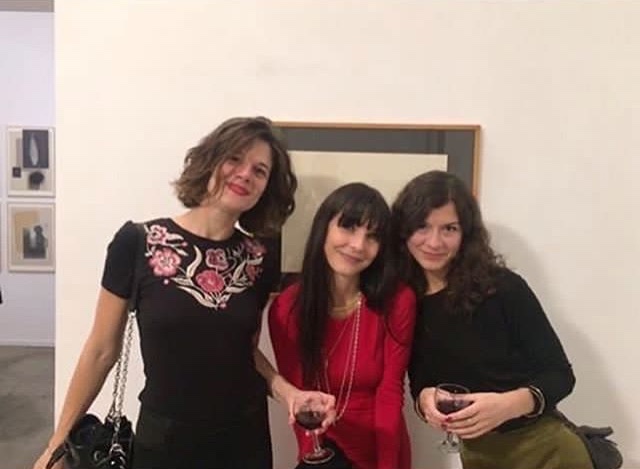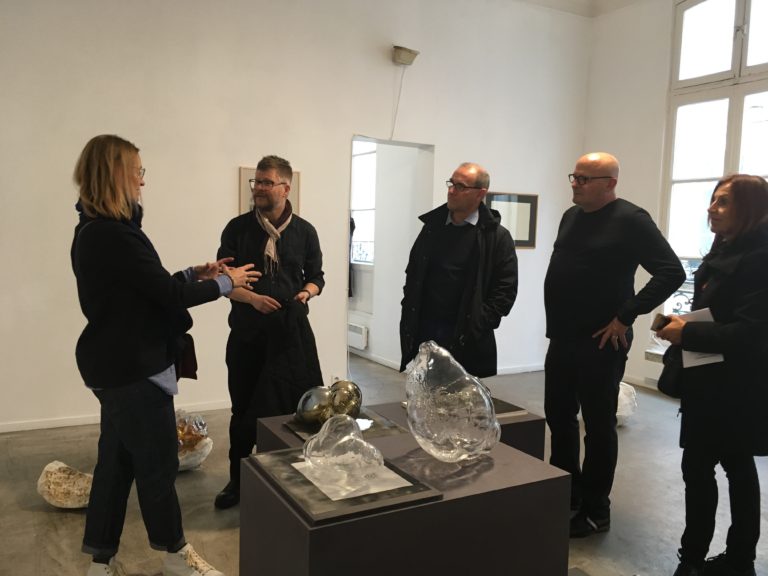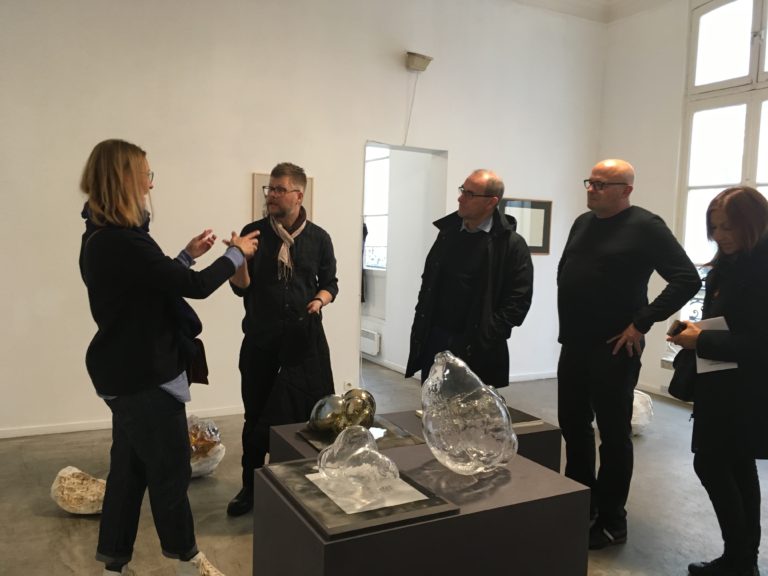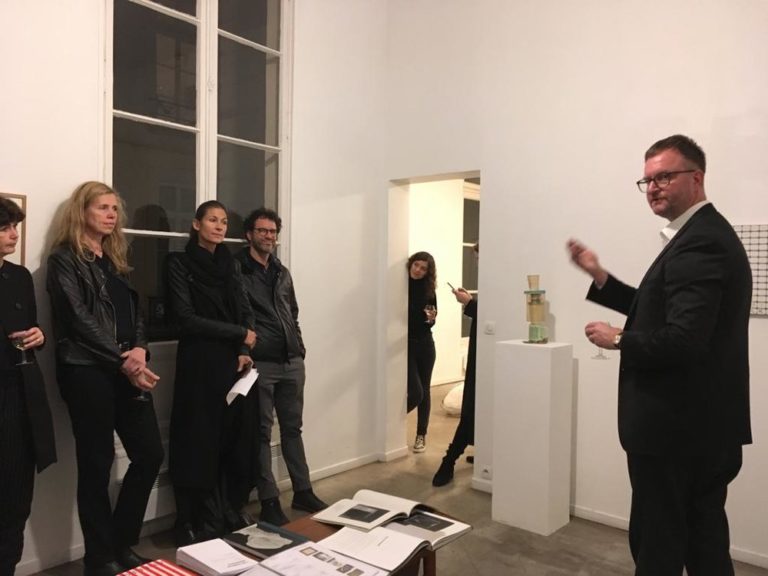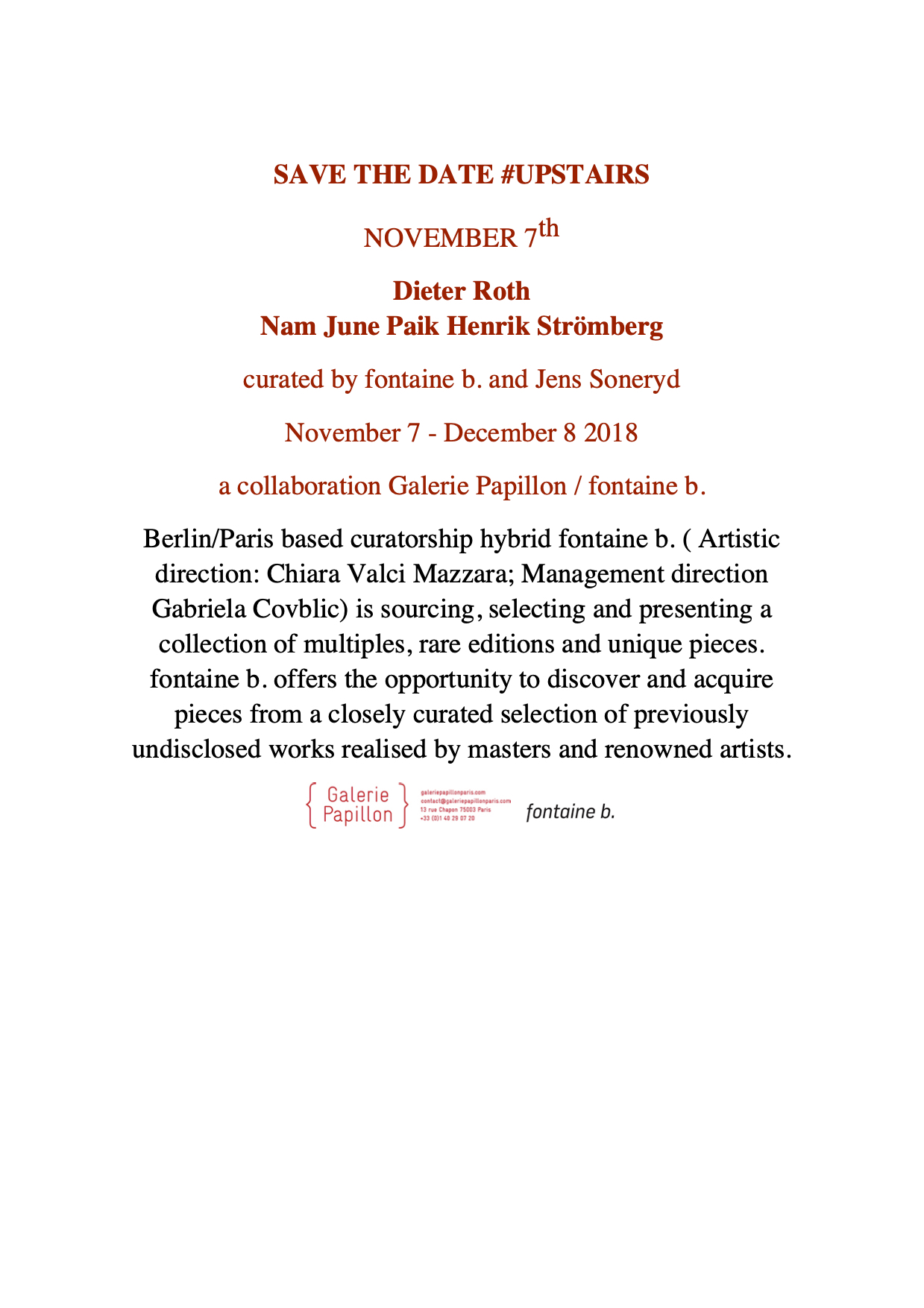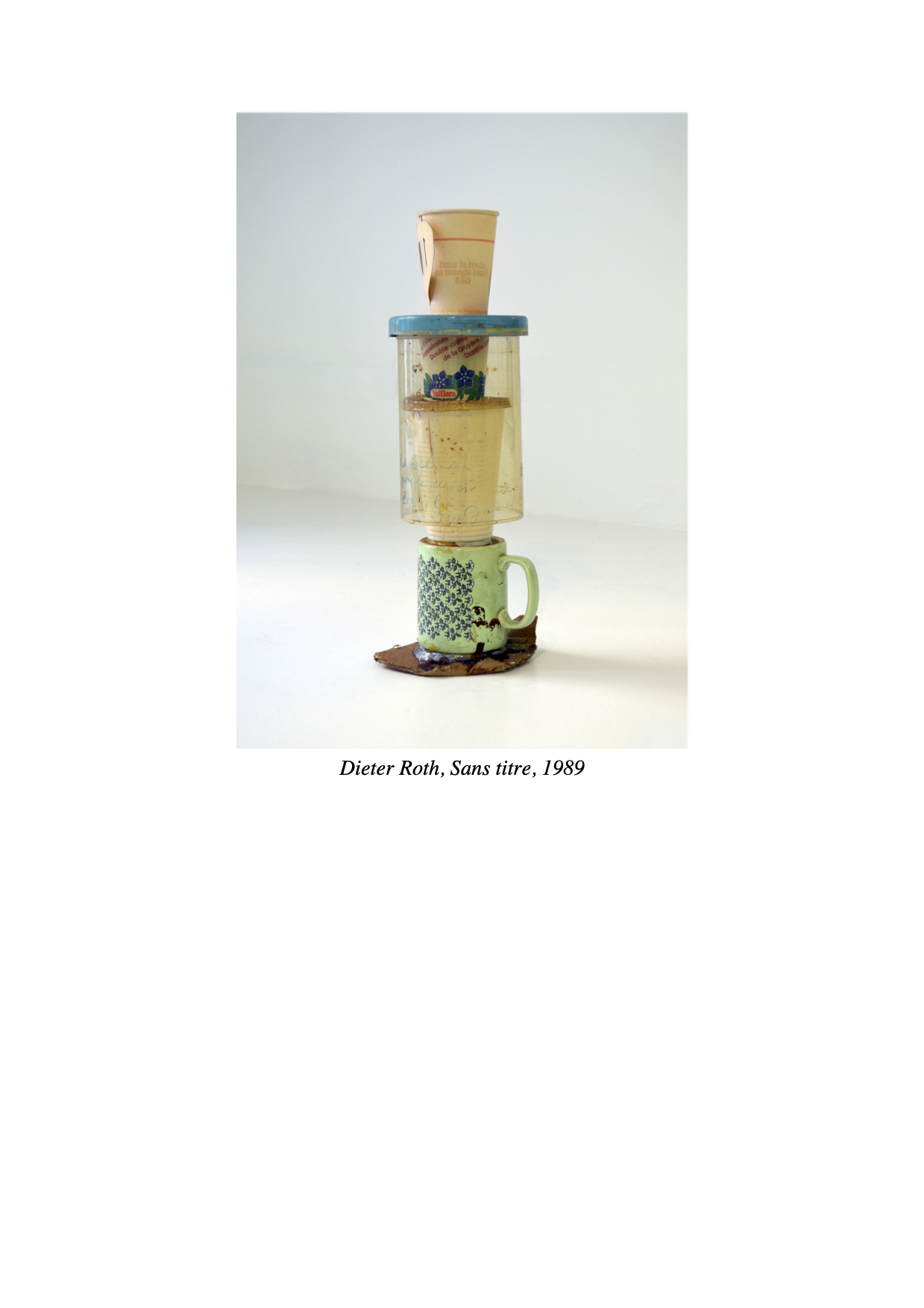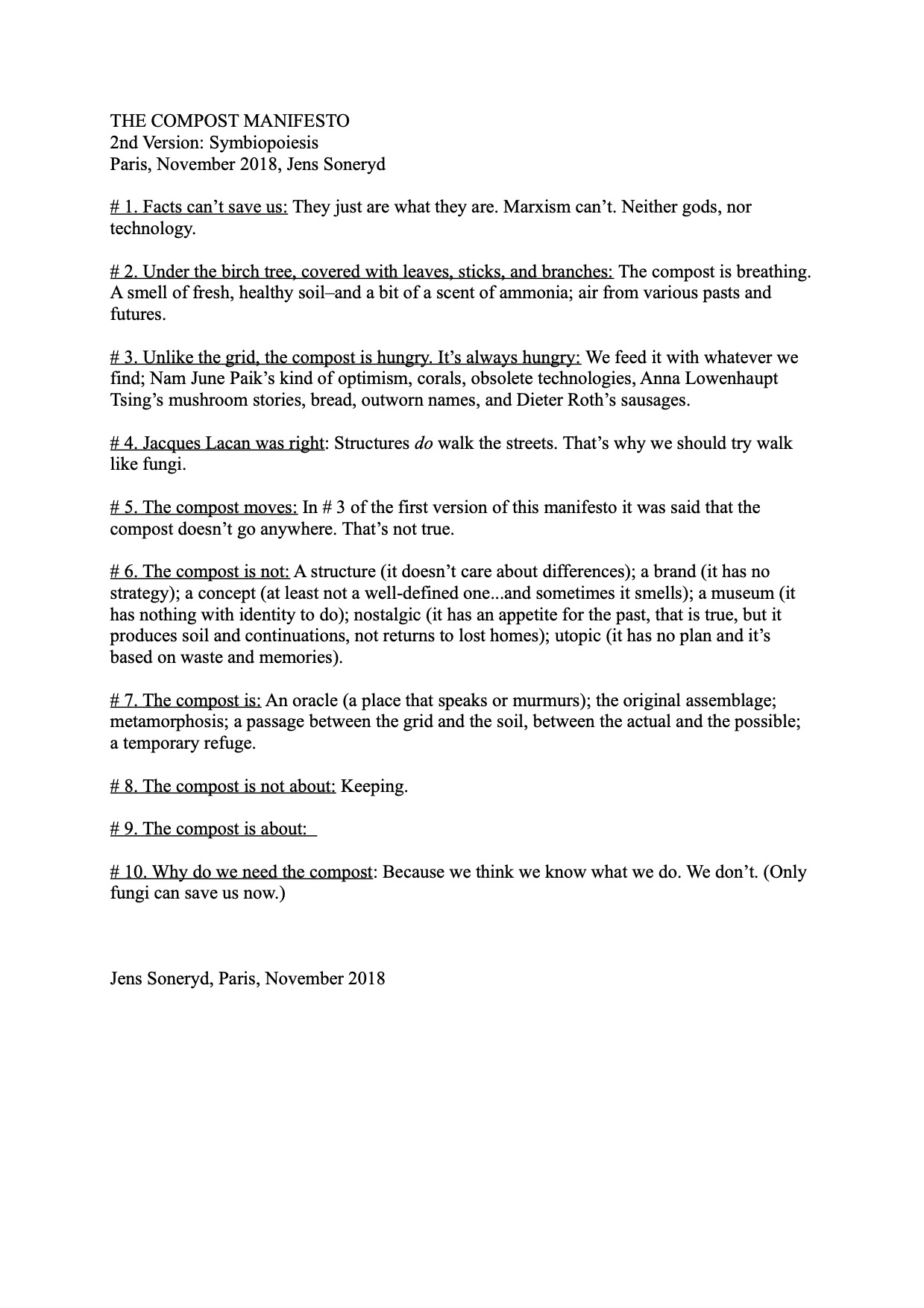Symbiopoiesis
Dieter Roth, Nam June Paik and Henrik Strömberg
Curated by Chiara Valci Mazzara – artistic Director of fontaine b. – and Gabriela Anco – managing director of fontaine b. with Jens Soneryd
Papillon Galerie
13 Rue Chapon, 75003 Paris
Vernissage Wednesday November 7th, 6 – 9 pm
November 7th 2018 through December 8th 2018 – Show prolongued until 15 January 2019 –
http://galeriepapillonparis.com/?expocommunique/Symbiopoiesis3&navlang=en
Symbiopoiesis is an encounter between glass objects, photographic works and collages by Henrik Strömberg and works by Nam June Paik and Dieter Roth. The artists share an interest in the assemblage and topics such as technology, media and processes of growth and decay, that are highly relevant in a time of vast planetary changes.
It is also an encounter between the intentional and the accidental, between alienation and symbiotic relations, between technology and unreliable micro-organisms, between linearity and total mess, and between the grid and the compost. Ultimately, it is an encounter between two divergent ways of seeing, understanding, and being in the world. One that calculates, fixes, organizes, and divides into parts and units. One that connects, speculates, fabulates, assists and affirms unforeseen encounters and outcomes.
The exhibition departs from an exploration of the grid, with paintings by Nam June Paik, whose optimistic aim to humanize technology contrasts with the more hesitant approach of both Henrik Strömberg and Dieter Roth. Eventually, the straight lines of the grid disperse and break down. The system is transformed into soil, with biodegradable works by Dieter Roth and Henrik Strömberg’s glass objects, that appear as the fruiting bodies of an unknown fungus.
“Symbiopoiesis” is a biological term that refers to the development of species in interaction with their environments and with other organisms. One example is the bob-tailed squid that has an effective way of protecting itself from predators: it has a light-organ which enables it to hide its shadow by imitating moonlight. This organ is not innate; it develops first when the squid encounters certain bacteria in the seawater. The concept of symbiopoiesis contrasts with the self-formation and self- organization of “autopoiesis”.
—
Nam June Paik – Born 1932 in Seoul, Korea – 2006, Miami, Florida.
Nam June Paik was an American-Korean artist considered the founder of video art. In his manifesto of 1969, he affirms: “I want to shape the canvas of the television screen as precisely as da Vinci, as freely as Picasso, as colorful as Renoir, as deeply as Mondrian, as violently as Pollock and as lyrical as Jasper Johns”. Very young, Paik moves together with his family to Japan where he studies classical piano at the University of Tokyo. He later moves alone to Germany, meeting artists John Cage, Karl Stockhausen, Carl Maciunus and Joseph Beuys, key figures of his life, which results in him joining the Fluxus movement. For “Exhibition of Music- Electronic Television”, his first solo show at the Parnass Gallery in Wuppertal, he uses magnets to edit several TV screens, establishing himself as the founder of video art. Later in 1964, in New York, he mixes visual and musical interests, collaborates with cellist Charlotte Moorman and creates TV Cello (1971), a performance in which televisions were transformed into musical instruments. Paik received numerous awards including the Golden Lion at the Venice Biennale in 1994 and a Lifetime Achievement in Contemporary Sculpture in 2001.
—
Dieter Roth – Born 1930 in Hannover, Germany – 1998 in Basel, Switzerland. Dieter Roth was a German-Swiss conceptual artist. Best known for his use of biodegradable matter, he creates sculptures and large-scale installations from cheese, chocolate and sugar that return a strong smell when exposed. His practice blurs the line between process and product and addresses the issue of accident, mutation and resistance. Roth works with the Fluxus movement on several occasions, which he later describes as a “talent club”. In 1992, he is a major figure in the world of international art, represents Switzerland at the Venice Biennale and, the same year, is the subject of a major retrospective at the MoMA in New York. Towards the end of his life, he collaborates extensively with his son, Björn Roth, notably on Solo Szenen (Solo Scenes) (1997 – 1998), a video that shows the last year of Roth (Dieter) when he succumbed to the disease.
—
Henrik Strömberg and the compost
‘Henrik Strömberg is a collector. The floor, tables, and shelves in his studio in Berlin are filled by a manifold of objects of various kinds: corals, trophies, cobblestones, maple leaves, pieces of dry bread, lichens, cloths, blades of grass, metal chains … Some things are arranged into assemblages and organized into idiosyncratic systems. Others are put aside in storage. He spends a lot of time to move his things around, to try out new combinations, and to rewrite the principles for his systems; they appear to always be in a state of flux. This is his way of exploring them–not to find out what they essentially are and to fix their identities, but rather to release their semantic diversity. He approaches his objects as if they could be or become anything–or nothing in the sense of a distinguishable something. As an artist, Henrik Strömberg does not oppose processes of mutation or decay. Rather, he supports them, and allows them to take part in his practice. They are important, since they let him lose hold of control. This makes him a peculiar kind of collector. After all, to collect is to remember, not to forget, it is to preserve and to save from ruin. The whole idea with collecting is to keep things intact, to offer a haven, where they forever can remain the way they are. The passion for collecting seems to increase in parallel to a heightened anxiety about an uncertain future. Menaced by a flood, Noah–the original collector–started to bring animals into his ark. Not surprisingly, the golden age of museums began with the birth of modernity and the disenchantment of the world. And now, as we’ve entered the unstable era of the Anthropocene–with global warming, and mass extinction of species–we’ve started to collect again, to save what’s left in our damaged world. In 2008, the Global Seed Vault opened in Svalbard, Norway–an earthquake resistant depository for the world’s most important crops. Collections consist of objects and fragments that have departed the flourishing and decaying world, and been inscribed in an order designed to refuse every kind of change, in which they are petrified. The herbarium is the iconic collection. The pressed plant is not a plant anymore, but a sign for a certain species. The thriving and decaying plant belongs to the living soil; to its fungi, bacteria, and its worms. Just like the herbarium, every collection borders to the compost–a site of disappearances, transformation, and resurgence. The compost is also the site of Henrik Strömberg’s practice, and where this exhibition takes place. The compost, however, is never the creation of a single, autonomous individual. It is not formed through autopoiesis, but through symbiopoiesis. It is a collaborative project, whose outcome can never be fully anticipated. Thus, for Henrik Strömberg it is wholly logical to exhibit together with artists such as Nam June Paik and Dieter Roth, with whom he shares the interest in the assemblage and in topics such as technology, media and processes of growth and decay. In the exhibition Symbiopoiesis, the compost is explored as a creative and artistic strategy, but also as a straightforward way to relate to the world.’ Jens Soneryd
Henrik Strömberg – born in 1970 in Sweden, he lives and works in Berlin
Henrik Strömberg studied Fine Art (B.A) at Camberwell College of Art, London Institute (1994–1997), and an M.A. in Photography and History of Photography FAMU in Prague (1997–1999).
He has had solo exhibitions in spaces such as: The Federal Foreign Office, Auswärtiges Amt, Berlin, Konrad Fischer Galerie Berlin, Neumeister Bar-Am, Berlin, Grundemark-Nilsson Stockholm and a current exhibition at Galerie Papillon, Paris.
Recent grants and scholaships include: AArtist residency Auswärtiges Amt in Berlin, 2016; Berlin Senat Research Grant for Statues project.
In 2016 a Monograph:“Mashti” was published by Neumeister Bar-Am.
Statement: I work with the idea of metamorphosis, decay and the transformation of materials; sculptural objects and their photographic documentation, as well as the deconstruction and transformation of the photographic image itself. Combining seemingly disparate images, adding pigment, paint and/or cutting out parts of the image I initiate a process in which the image is removed from its context, its referent and expected narrative; I further explore this through the arrangements and combination of works; with the intention to create ambiguous narrations, formations of details, or a kind of temporary entropy.
Exhibition views and opening reception:
@ Henrik Strömberg


